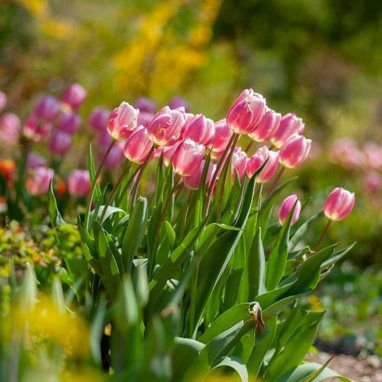
The Maiden is honored, as the Bride, on this Sabbat. Straw Brideo'gas (corn dollies) are created from oat or wheat straw and placed in baskets with white flower bedding. Young girls then carry the Brideo'gas door to door, and gifts are bestowed upon the image from each household. Afterwards at the traditional feast, the older women make special acorn wands for the dollies to hold, and in the morning the ashes in the hearth are examined to see if the magic wands left marks as a good omen. Brighid's Crosses are fashioned from wheat stalks and exchanged as symbols of protectioOstara Practices:
The name Ostara comes from Eostre, an Eastern European moon goddess whose power peaks at this time of year. This is also where the word Easter comes from, and there are many similarities between the symbolism of Easter and Ostara, including decorating and hunting eggs. According to legend, Eostre is closely connected to rabbits, hence the "Easter Bunny."
The colors of Ostara include pastels, especially blue, yellow, pink, and green.
Popular Ostara flowers are the daffodil and hyacinth, both of which bloom early in this season.
